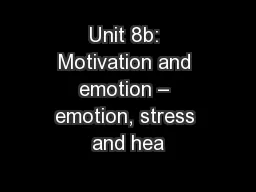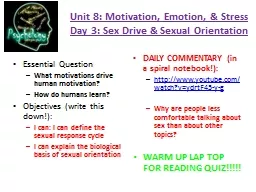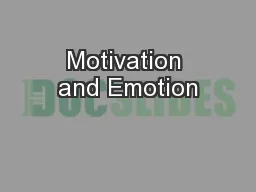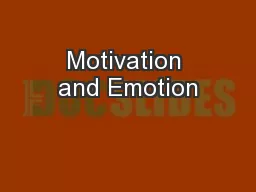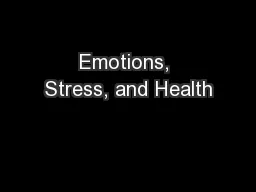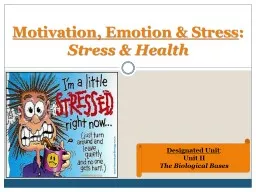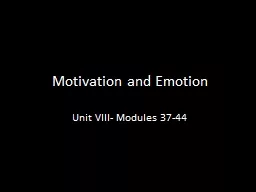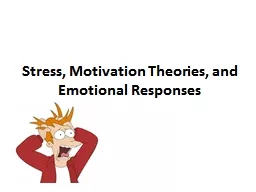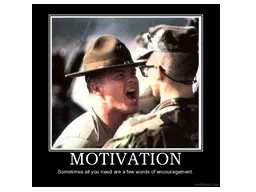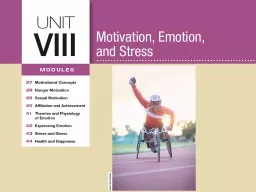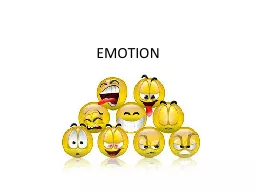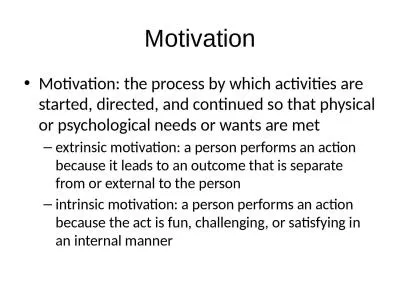PPT-Unit 8b: Motivation and emotion – emotion, stress and hea
Author : ellena-manuel | Published Date : 2015-12-04
Theories of emotion Our emotional state is closely related to our motivation For each behavior that you perform there is an accompanying feeling about that action
Presentation Embed Code
Download Presentation
Download Presentation The PPT/PDF document "Unit 8b: Motivation and emotion – emot..." is the property of its rightful owner. Permission is granted to download and print the materials on this website for personal, non-commercial use only, and to display it on your personal computer provided you do not modify the materials and that you retain all copyright notices contained in the materials. By downloading content from our website, you accept the terms of this agreement.
Unit 8b: Motivation and emotion – emotion, stress and hea: Transcript
Download Rules Of Document
"Unit 8b: Motivation and emotion – emotion, stress and hea"The content belongs to its owner. You may download and print it for personal use, without modification, and keep all copyright notices. By downloading, you agree to these terms.
Related Documents

